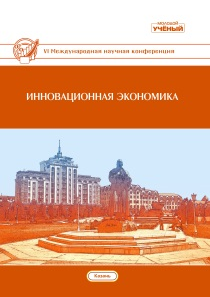Deep learning: using long short-term memory algorithm in forecast insurance charges
Авторы: Нгуен Хынг Кыонг, Тран Тхе Туан
Рубрика: 1. Экономическая теория
Опубликовано в
VI международная научная конференция «Инновационная экономика» (Казань, июнь 2019)
Дата публикации: 04.06.2019
Статья просмотрена: 52 раза
Библиографическое описание:
Нгуен, Хынг Кыонг. Deep learning: using long short-term memory algorithm in forecast insurance charges / Хынг Кыонг Нгуен, Тхе Туан Тран. — Текст : непосредственный // Инновационная экономика : материалы VI Междунар. науч. конф. (г. Казань, июнь 2019 г.). — Казань : Молодой ученый, 2019. — С. 1-9. — URL: https://moluch.ru/conf/econ/archive/335/15120/ (дата обращения: 24.04.2025).
Forecasting insurance charges for new customers has always been a daunting task for insurance companies due to the limitations of information and computational complexity. Today, with the development of computer science, artificial intelligence and especially Deep Learning has brought new solutions ever before. With many neural units and artificial neural layers, Deep learning will be able to self-study and identify many complex issues so it is able to effectively handle the forecast of insurance charges to be paid to customers. This article focuses on introducing Long short-term memory (LSTM) algorithm in Deep Learning to forecast insurance charges through a set of actual data, through which readers can understand and apply algorithms into your own research or business issues.
Keywords: deep learning, forecast, classification, insurance charges, LSTM.
Life insurance is a potential and attractive market, but it is also very challenging and competitive for all insurance businesses. In order for insurance companies to operate effectively, the calculation of the correct insurance premium is extremely. However, it is very difficult to determine insurance fees because it must be based on scientific calculation bases to value products while ensuring customers' benefits and ensuring the profitability of insurance companies. At the same time, companies also have to calculate how to be able to pay insurance policies as well as to ensure the reserve level for other activities. Therefore, it is extremely important to accurately predict the insurance charges to pay insurance buyers, which is the most important for determining insurance premiums.
Today, with the development of computer science, artificial intelligence and especially Deep Learning has brought new solutions ever before. Deep Learning tries to simulate the bio-brain to help computers not only have the ability to process information like the human brain but also can manipulate on big data. With many neural units and artificial neural layers, Deep learning will be able to self-study and identify many complex issues so it is able to effectively handle the forecast of insurance charges to be paid to customers. Using Deep learning helps forecast insurance charges for customers easily and quickly, saving a lot of time, manpower and costs for insurers. This article studies the use of Long short-term memory (LSTM) algorithm in Recurrent Neural Network to forecast the insurance cost to be paid to customers, in Python programming language and programming library: Numpy, Pandas, Matplotlib, Scikit-learn, Tensor flow, Keras through a data processing reality.
Long short-term memory algorithm and the data set
Long short-term memory (LSTM)
Long short-term memory (LSTM) is an architectural form of Recurrent Neural Network (RNN) used in Deep Learning. Unlike standard feedforward neural networks, LSTM has feedback connections that make it a «general purpose computer». (wikipedia.org, 2019) LSTM can learn to do tasks that require memory about events that happened thousands or even millions of discrete time steps earlier. LSTM can not only process single data points (such as images), but also entire sequences of data (such as speech or video). (Sepp Hochreiter & Jürgen Schmidhuber, 1997)
A common LSTM unit is composed of a cell, an input gate, an output gate and a forget gate:
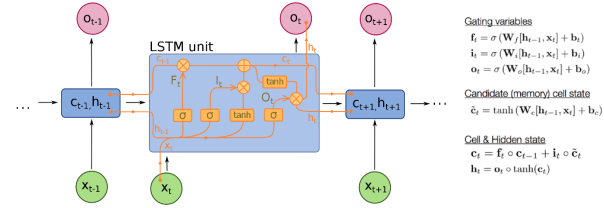
Fig. 1. A common LSTM unit component: xt: input vector to the LSTM unit; Ft: forget gate's activation vector (Sigmoid); It: input gate's activation vector (Sigmoid); Ot: output gate's activation vector (Sigmoid); ht: hidden state vector also known as output vector of the LSTM unit; ct: cell state vector [Hình 1: A LSTM unit with forget gate Nguồn: https://colah.github.io/posts/2015–08-Understanding-LSTMs/]
The Data set
«Sample Insurance Claim Prediction Dataset» is based on «Medical Cost Personal Datasets». The data contains information of the people and based on this information the insurance company calculates the insurance charges. The goal is to forecast the insurance charges to be paid to new policyholder based on the information that the insurance company is provided from, thus calculating the premium.
Các trường thông tin bao gồm:
age: age of policyholder
sex: gender of policy holder (female=0, male=1)
bmi: Body mass index
children: number of children / dependents of policyholder
smoker: smoking state of policyholder (non-smoke=0; smoker=1)
region: the residential area of policyholder in the US (Northeast, Northwest, Southeast, Southwest)
charges: individual medical costs billed by health insurance insuranceclaim
Source: https://www.kaggle.com/easonlai/sample-insurance-claim-prediction-dataset
Building forecasting model
Using Jupyter programming editor software to build forecasting model:
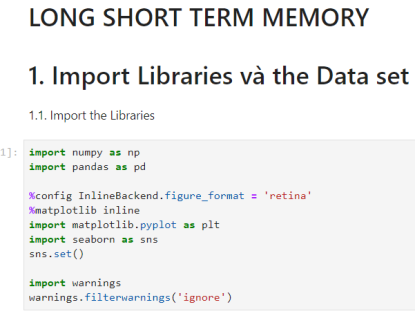
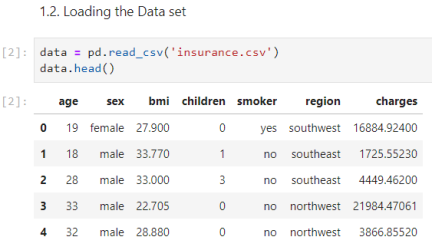

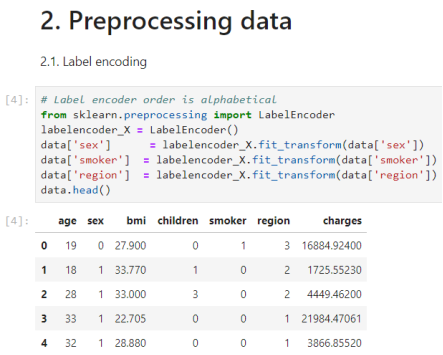
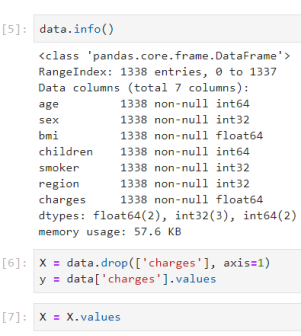

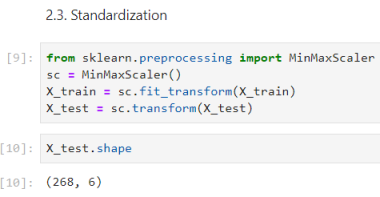
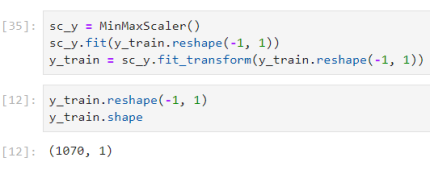
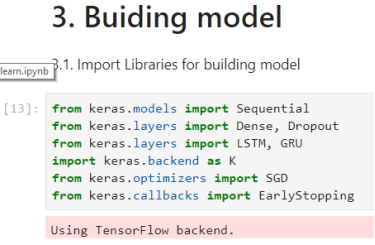

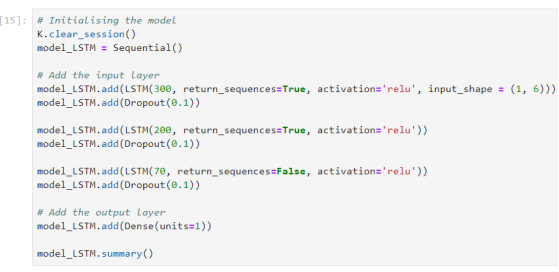
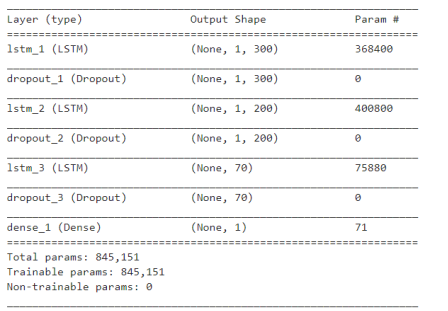
The network has 5 neural layers, 577 neural units, and 845.151 params.



The model after training has loss = 0.12 and mean absolute error = 0.0438.
DISCUSSION
To assess the accuracy of the forecast model in fact, need to check the model through the independent test data set:

With the test data set, the model for the result changes not much compared to the train data set: loss = 0.0050 data set; mean absolute error = 0.0451.

R2 Test score = 0.8607 shows model capable of explaining 86.07 % for the variation of the variable insurance charge. Thus, model_LSTM of insurance charges prediction is a good forecasting model with an ability to explain for dependent variable greater than 80 %.
Conclusion
With 6 basic information of customers, models that explain variable coverage of more than 80 %, the potential of Deep learning usage is huge in insurance premiums, as well as in general business. With the development of science and technology, the processing power of computers is increasingly strong, making Deep Learning more and more perfect, and more accurate, bringing great efficiency to society. This article introduced the use of LSTM algorithm in Deep Learning to forecast the insurance charges, but Deep Learning applications are still very large and the author will continue to introduce in the next article.
References:
- Alex Smola, & S. V. N. Vishwanathan. (2008). INTRODUCTION TO MACHINE LEARNING. Cambridge University Press.
- Edouard Duchesnayt, & Tommy Löfsted. (2018). Statistics and Machine Learning in Python — Release 0.2. ftp://ftp.cea.fr.
- Frank Rosenblatt. (1961). Principles of Neurodynamics: Perceptrons and the Theory of Brain Mechanisms. Washington DC: Spartan Books.
- Guido van Rossum, & et al. (2018). The Python Language Reference — Release 3.7.1. Python Software Foundation.
- JürgenSchmidhuber. (2015). Deep learning in neural networks: An overview. Neural Networks, 61, 85–117.
- NumPy community. (2018). NumPy Reference — Release 1.15.4. SciPy.org.
- Keras. (2019). Keras Documentation. keras.io
- Scikit-learn developers. (2018). scikit-learn user guide — Release 0.20.1. scikit-learn.org.
- Sepp Hochreiter, & Jürgen Schmidhuber. (1997). Long Short-Term Memory (Volume 9, Issue 8 ed.). Massachusetts Institute of Technology.
- Shai Shalev-Shwartz, & Shai Ben-David. (2014). Understanding Machine Learning: From Theory to Algorithms. Cambridge University Press.
- Shashi Sathyanarayana. (2014). A Gentle Introduction to Backpropagation. Numeric Insight, Inc Whitepaper.
- Wes McKinney & et al. (2018). pandas: powerful Python data analysis toolkit — Release 0.23.4. PyData Development Team.
- wikipedia.org/wiki/Long_short-term_memory
Похожие статьи
The need for the dynamic approach in the knowledge era
The article describes the prevalence of digital content such as videos and podcasts that are accessible and cover a wide range of topics creating new and exciting opportunities to master essential skills in a way that leads to success and achievement...
Assessment Methods in Learning English at Distance Learning
Nowadays, in the modern world, the use of modern technical teaching aids has become a ubiquitous phenomenon. Information educational technologies in our country have received intensive development and began to confidently gain its place in the educat...
Communicative approach in enhancing the soft skills in English classes
Based on to the decree of the Ministry of Education and Science of the Republic of Kazakhstan, one of the main goals of the modern education system is to bring up an individual who is fluent in a foreign language, globally competitive, and has interp...
The practical side of IoT implementation in smart cities
Smart cities are an innovative concept of sustainable urban design that gains popularity across the globe. Its core premise is the provision of smart educational, utility, traffic, waste and resource management, and health services with an advanced l...
A brief analysis of the application of micro class in surgical teaching
With the development of modern information technology, the concept of mobile communication, social media and educational resource, sharing has come into our teaching system. It has the characteristics of self-learning without the restrictions of time...
Incorporating ethics into interpreters/translators training curriculum in Kazakhstan
In recent years, the issue of the importance of ethics in interpreters/translators training programs has become more and more discussed and many universities abroad have actually already introduced it. However, in Kazakhstan very little attention is ...
Artificial Intelligence (AI) from a philosophy-of-science perspective
Internet of things (IoT) and personal analytics (PA) with multiple sensors and devices are generating at high velocity a plethora of disparate data defining a complex, heterogeneous landscape such as a human interconnected system. These high-dimensio...
Applying circadian rhythms in medicine
Circadian rhythms have evolved since the very beginning of life to stay synchronized with the rotation of Earth and the rising and setting of the sun. Observations that organisms adapt their physiology and behavior to the time of the day by having in...
The role of audio-visual tools on teaching technical courses in English
Audio-visual tools are being used in fields of manufacturing. It has already become a part of our daily life and taking a main contribution in developing of fields. As well as, teaching technical courses through audio –visual tools in English languag...
Key Factors and Strategies for Successfully Mastering Oral Foreign Language Skills
Speaking is a core language skill that requires both linguistic competence and cognitive processing. Despite its importance, many learners face challenges in achieving oral fluency due to traditional grammar-focused instruction, limited speaking oppo...
Похожие статьи
The need for the dynamic approach in the knowledge era
The article describes the prevalence of digital content such as videos and podcasts that are accessible and cover a wide range of topics creating new and exciting opportunities to master essential skills in a way that leads to success and achievement...
Assessment Methods in Learning English at Distance Learning
Nowadays, in the modern world, the use of modern technical teaching aids has become a ubiquitous phenomenon. Information educational technologies in our country have received intensive development and began to confidently gain its place in the educat...
Communicative approach in enhancing the soft skills in English classes
Based on to the decree of the Ministry of Education and Science of the Republic of Kazakhstan, one of the main goals of the modern education system is to bring up an individual who is fluent in a foreign language, globally competitive, and has interp...
The practical side of IoT implementation in smart cities
Smart cities are an innovative concept of sustainable urban design that gains popularity across the globe. Its core premise is the provision of smart educational, utility, traffic, waste and resource management, and health services with an advanced l...
A brief analysis of the application of micro class in surgical teaching
With the development of modern information technology, the concept of mobile communication, social media and educational resource, sharing has come into our teaching system. It has the characteristics of self-learning without the restrictions of time...
Incorporating ethics into interpreters/translators training curriculum in Kazakhstan
In recent years, the issue of the importance of ethics in interpreters/translators training programs has become more and more discussed and many universities abroad have actually already introduced it. However, in Kazakhstan very little attention is ...
Artificial Intelligence (AI) from a philosophy-of-science perspective
Internet of things (IoT) and personal analytics (PA) with multiple sensors and devices are generating at high velocity a plethora of disparate data defining a complex, heterogeneous landscape such as a human interconnected system. These high-dimensio...
Applying circadian rhythms in medicine
Circadian rhythms have evolved since the very beginning of life to stay synchronized with the rotation of Earth and the rising and setting of the sun. Observations that organisms adapt their physiology and behavior to the time of the day by having in...
The role of audio-visual tools on teaching technical courses in English
Audio-visual tools are being used in fields of manufacturing. It has already become a part of our daily life and taking a main contribution in developing of fields. As well as, teaching technical courses through audio –visual tools in English languag...
Key Factors and Strategies for Successfully Mastering Oral Foreign Language Skills
Speaking is a core language skill that requires both linguistic competence and cognitive processing. Despite its importance, many learners face challenges in achieving oral fluency due to traditional grammar-focused instruction, limited speaking oppo...






